Tomato plants are among the most rewarding crops to grow—but they’re also among the most unruly. Without regular trimming, they can become tangled, disease-prone, and less productive. Trimming, or pruning, is the gardener’s way of guiding the plant’s energy toward what matters most: juicy, flavorful fruit.
This guide explains everything you need to know about trimming tomato plants—from the science behind it to step-by-step techniques and timing tips.
Why Trimming Tomato Plants Is Essential
Table of Contents
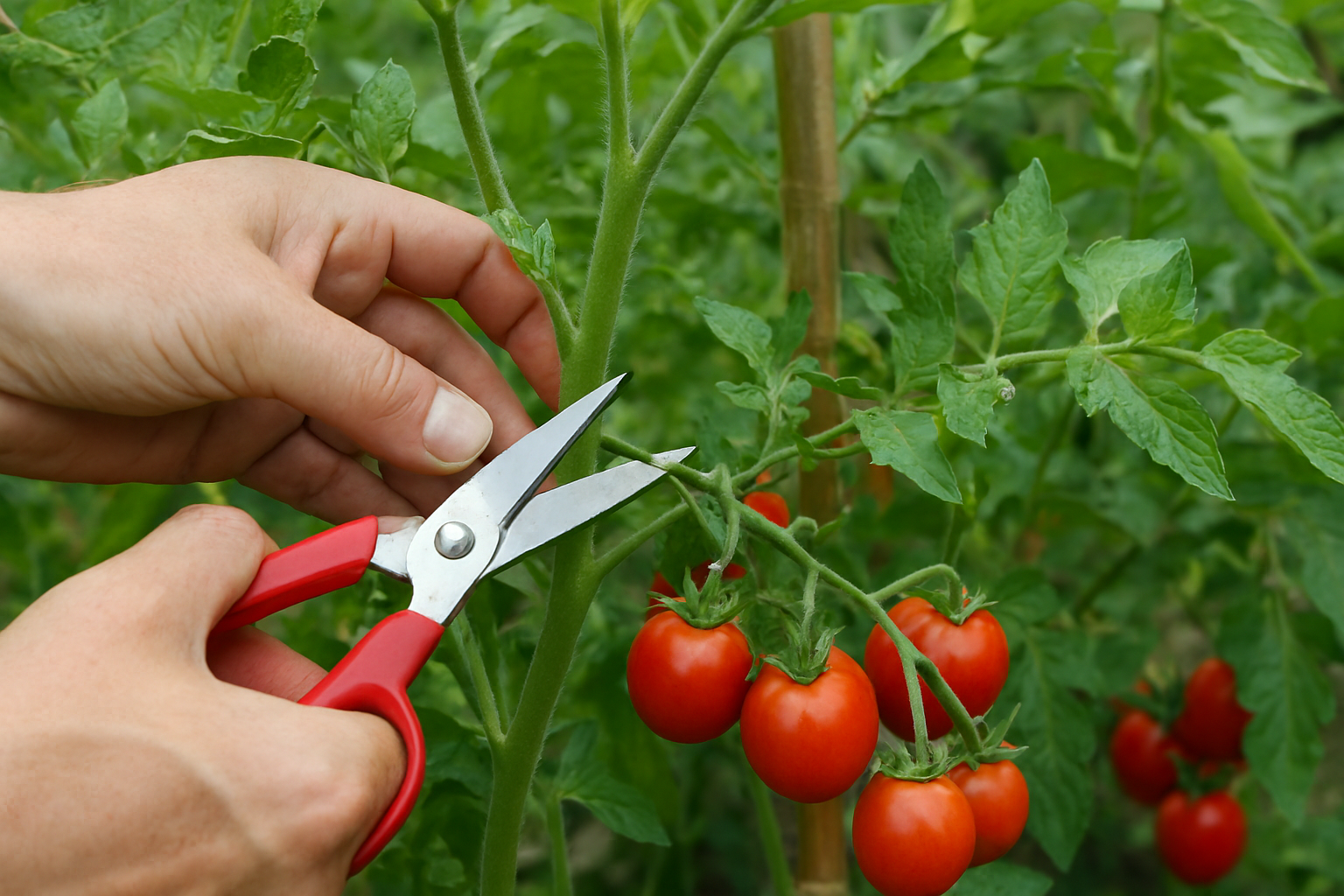
Trimming isn’t just about making your plants look tidy—it’s a powerful tool for improving plant health and boosting yield.
Key Benefits of Trimming
Here are the key benifits if trimming Tomato plants:
- Improves airflow, reducing the risk of fungal diseases like blight and mildew.
- Directs energy toward fruit production instead of excess foliage.
- Enhances sunlight penetration, helping fruit ripen evenly.
- Makes it easier to spot pests, diseases, and ripe tomatoes.
- Prevents overcrowding and tangled growth.
- By removing unnecessary growth, you help your tomato plants thrive—not just survive.
Identify Your Tomato Type
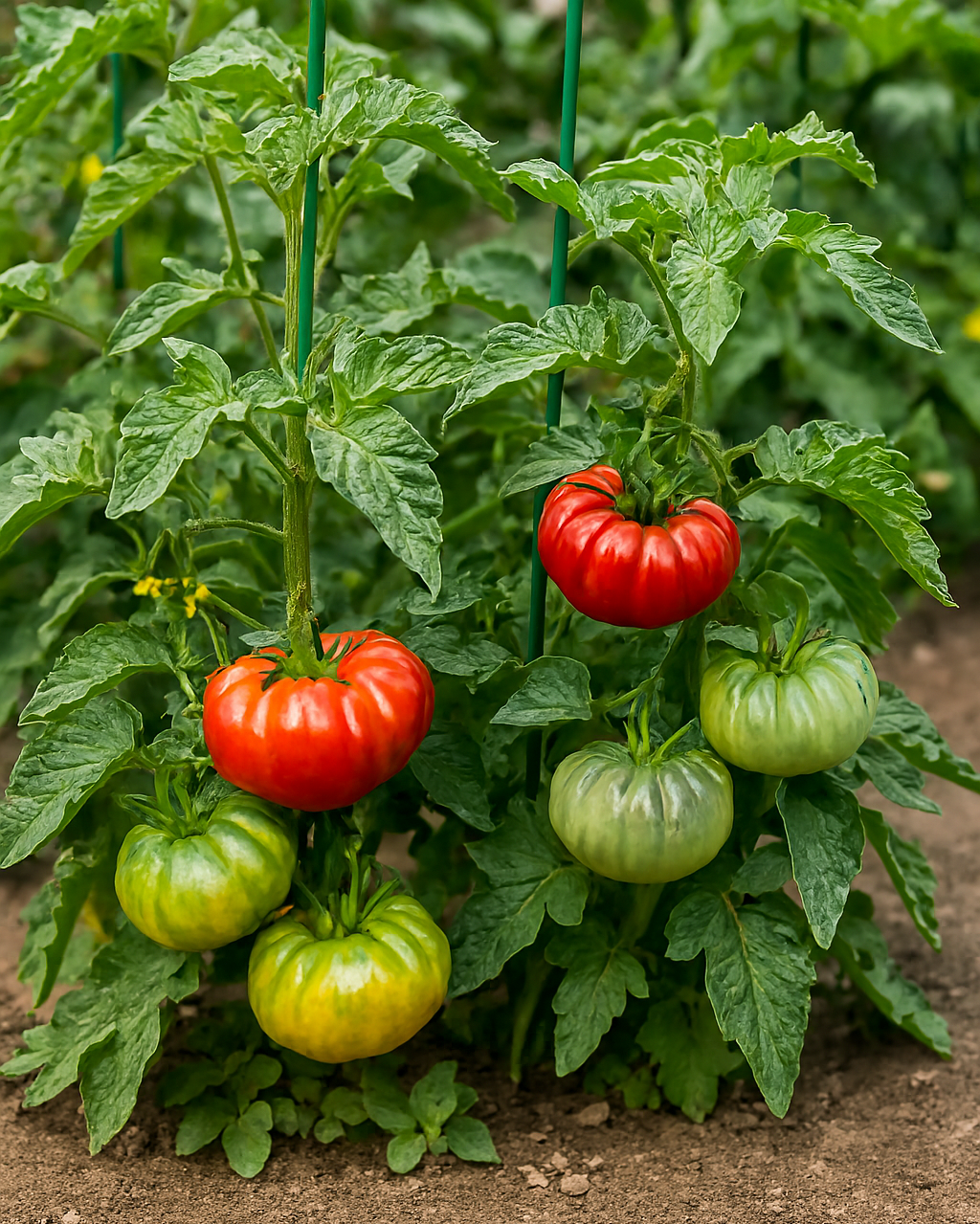
Before you start trimming, it’s crucial to know what kind of tomato plant you’re working with. This determines how much and how often you should prune.
There are two main types:
Determinate (Bush) Tomatoes:
• Grow to a fixed size and produce fruit all at once.
• Require minimal pruning—just remove dead or diseased leaves.
• Over-pruning can reduce yield, so be conservative.
Indeterminate (Vining) Tomatoes
• Grow continuously and produce fruit throughout the season.
• Benefit from regular pruning to manage size and maximize yield.
• Ideal for staking, caging, or trellising.
Knowing your plant type helps you prune with confidence and purpose.
What to Trim – A Step-by-Step Breakdown
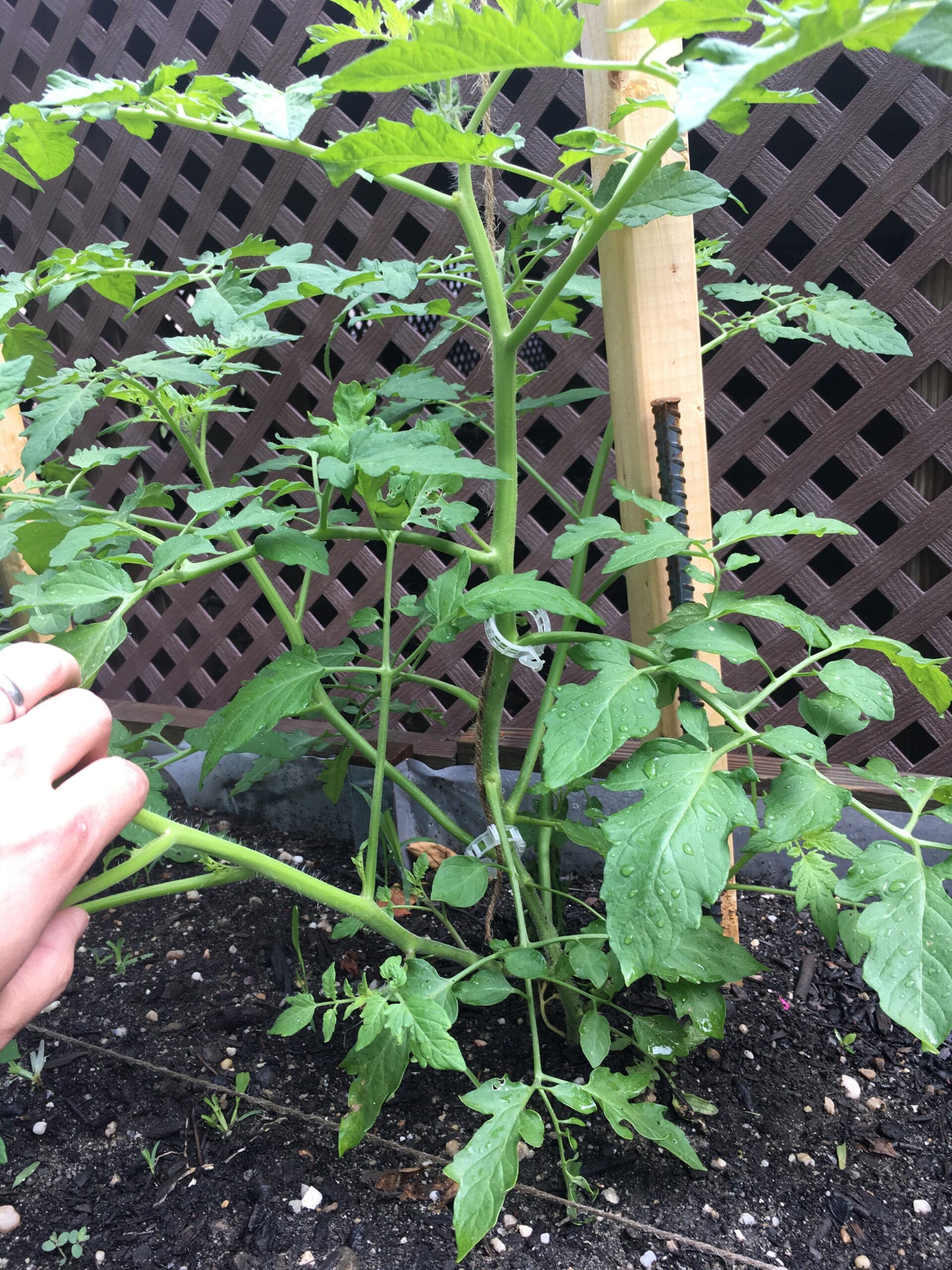
Once you’ve identified your plant type, it’s time to get hands-on. Here’s what to trim and why.
1. Remove Suckers
• What they are – Small shoots that grow in the “V” between the main stem and a branch.
• Why remove them – They divert energy from fruit production and create dense, tangled growth.
• How to do it – Pinch them off when they’re 2–4 inches long using clean fingers or sterilized pruners.
2. Trim Lower Leaves
• Why – Leaves near the base are more prone to disease and often shaded.
• When – Once the plant has set its first fruit cluster.
• How – Remove leaves below the first fruit cluster to improve airflow and reduce splash-up from watering.
3. Thin Dense Foliage
• Why – Overlapping leaves block sunlight and trap moisture.
• How – Remove interior leaves that shade fruit or crowd the plant’s center.
4. Top the Plant (Optional)
• Why – Late in the season, topping halts vertical growth and redirects energy to ripening fruit.
• How – Cut off the growing tip 4–6 weeks before your region’s first frost.
When to Trim Tomato Plants
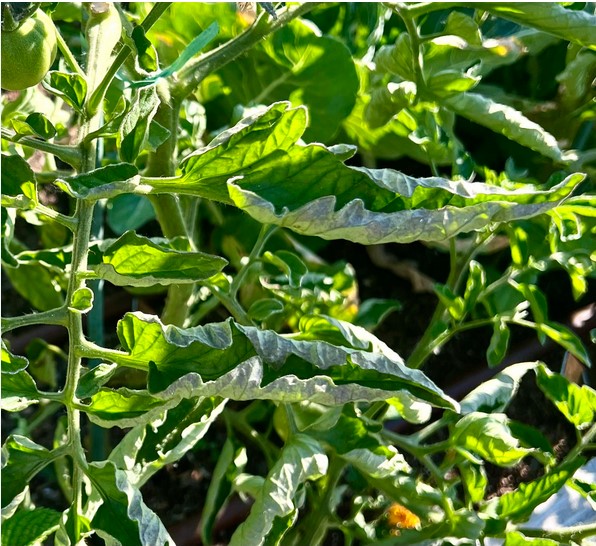
Timing your trimming is just as important as the technique.
Follow this seasonal rhythm:
Early Season (12–18 inches tall)
• Begin removing suckers and lower leaves.
• Establish a strong, open structure early.
Mid-Season (Peak Growth)
• Check weekly for new suckers and dense foliage.
• Maintain airflow and light exposure.
Late Season (Before Frost)
• Top the plant to stop new growth.
• Focus energy on ripening existing fruit.
Tools You’ll Need To Trim Tomato Plants
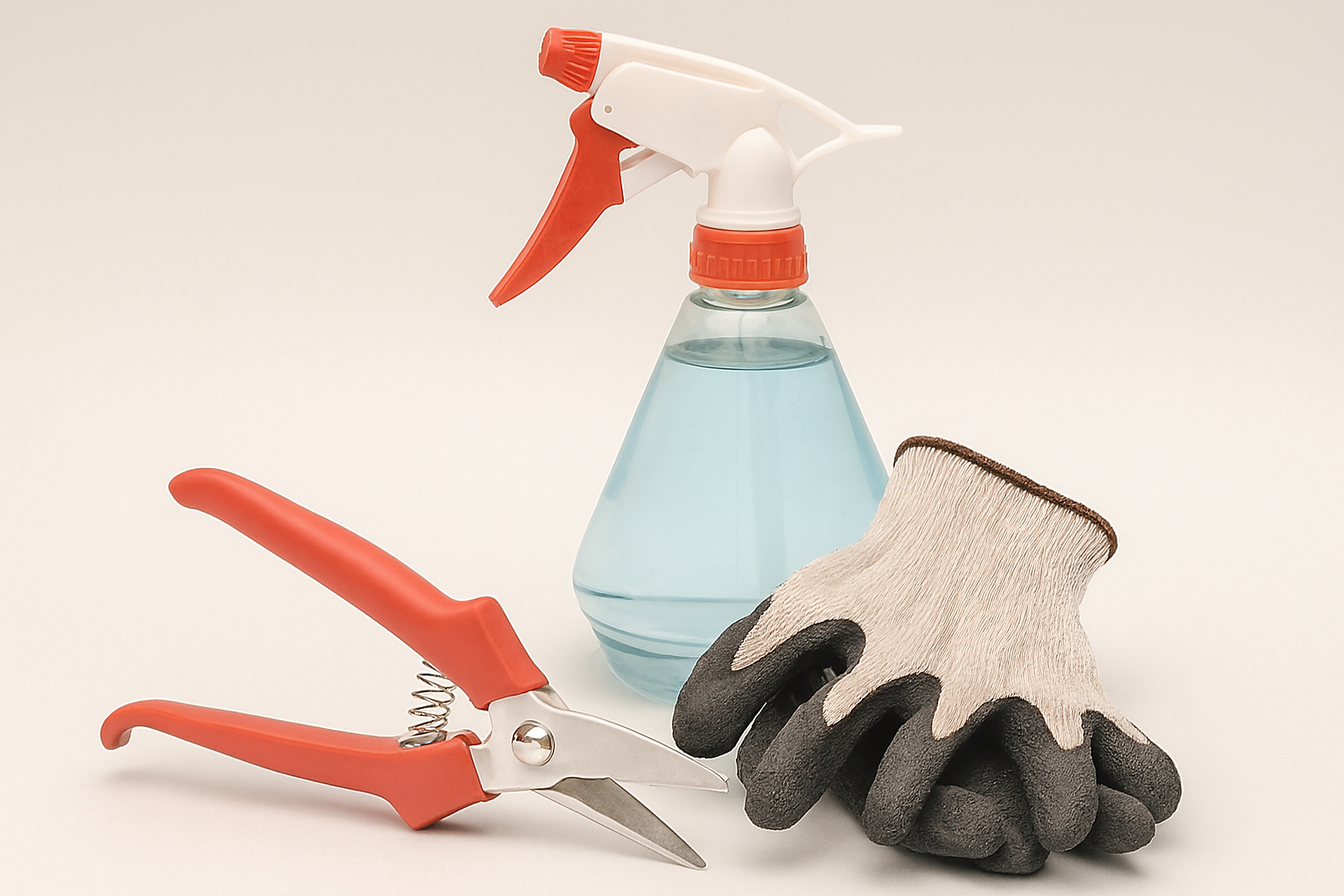
You don’t need a lot of gear to trim tomatoes, but the right tools make a big difference.
- Sharp pruning shears or scissors for clean cuts.
- Gloves (optional) to protect your hands from sap and irritants.
- Rubbing alcohol or bleach solution to sterilize tools between plants
- Sterilizing tip – Mix 1 part bleach with 9 parts water. Dip your tools for 30 seconds, then dry.
Common Trimming Mistakes to Avoid
Even experienced gardeners can make trimming mistakes. One of the most common is over-pruning. Removing too much foliage at once can stress the plant and reduce its ability to photosynthesize. Always trim gradually and observe how the plant responds.
Another mistake is pruning wet plants. Moisture increases the risk of disease transmission, especially when cuts are fresh. Wait for dry conditions before trimming.
Also, avoid removing fruiting branches. Only trim suckers and excess foliage—not stems with flowers or developing fruit. If you’re unsure, leave it for a few days and observe whether it begins to flower.
Lastly, don’t neglect tool hygiene. Dirty shears can carry pathogens from one plant to another, turning a healthy garden into a sick one.
Here are the points to consider:
- Over-pruning – Removing too much foliage can stress the plant and reduce yield.
- Pruning wet plants – Increases the risk of spreading disease.
- Cutting fruiting branches – Only remove suckers and non-productive leaves.
- Skipping tool hygiene – Always sterilize between plants to prevent disease spread.
What to Trim and What to Keep
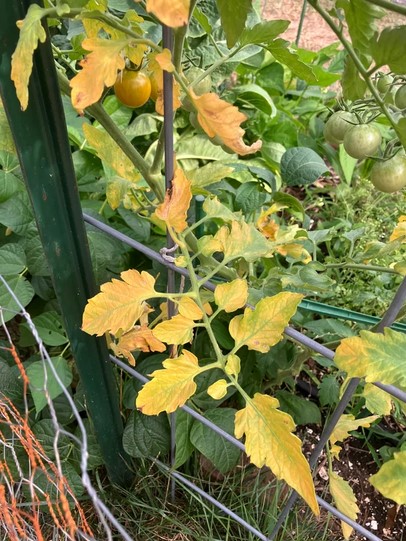
Use your eyes to guide your hands. Here’s what to look for:
Trim these:
• Suckers in the leaf axils (unless you’re training a second stem).
• Yellowing or spotted leaves near the base.
• Dense interior leaves that block airflow or light.
Keep these:
• Stems with flowers or fruit.
• Healthy green leaves that support photosynthesis.
• Strong secondary stems (if using double-stem training).
Advanced Techniques for Indeterminate Tomatoes
If you’re growing indeterminate varieties, you can take trimming to the next level with structured pruning.
Try these methods:
Single-Stem Training:
• Remove all suckers except the main stem.
• Ideal for vertical trellising or tight spaces.
Double-Stem Training:
• Keep one sucker below the first flower cluster as a second productive stem.
• Balances yield and manageability.
Cluster Pruning:
• Once fruit sets, remove the leaves directly above the cluster.
• Exposes fruit to sunlight and speeds ripening.
These techniques are especially useful in greenhouses or high-density gardens.
Companion Practices That Boost Trimming Results
Trimming works best when paired with other smart gardening habits.
Combine trimming with:
Staking or caging – Keeps plants upright and accessible.
Mulching – Reduces splash-up, retains moisture, and suppresses weeds.
Consistent watering – Prevents fruit cracking and stress.
Balanced fertilization – Feed after pruning to support recovery and fruiting.
Compost tea – Boosts microbial health and resilience.
Adapting to Your Climate

Your trimming strategy should reflect your local conditions.
In humid climates:
• Prune more aggressively to prevent fungal outbreaks.
• Focus on airflow and spacing.
In dry climates:
• Prune moderately—sun exposure is key, but don’t overdo it.
• Retain some foliage to shade fruit from scorching.
In short growing seasons:
• Top plants early to ensure fruit ripens before frost.
• Remove new flowers late in the season to conserve energy.
Wrapping Up
Trimming tomato plants isn’t just a task—it’s a ritual. It’s how you shape the plant’s future, guiding it toward abundance. With just a few minutes each week, you can transform a wild tangle into a thriving, fruit-laden masterpiece.
Whether you’re growing for your kitchen or creating content for your audience, trimming is a skill worth mastering—and showcasing.
Leave a Reply